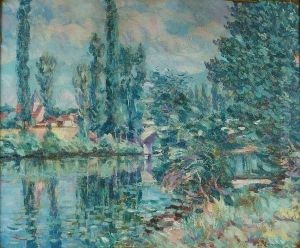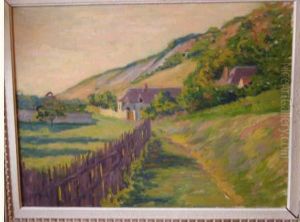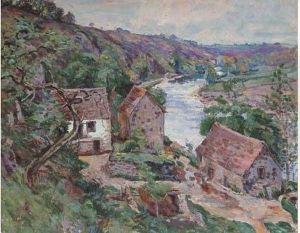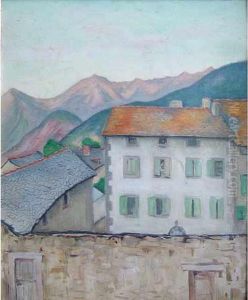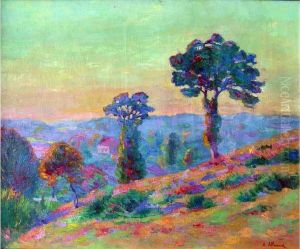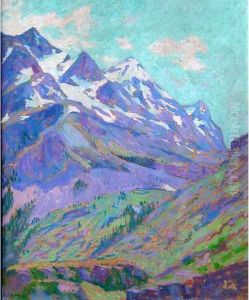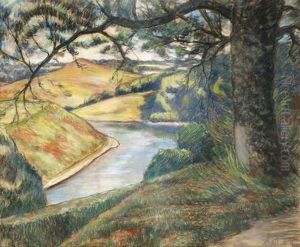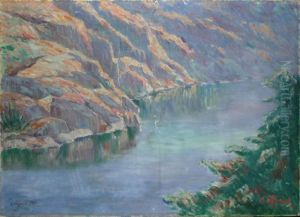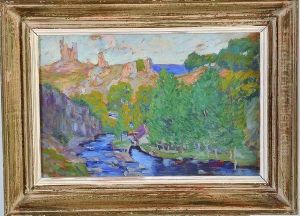Eugene Alluaud Paintings
Eugène Alluaud was a French painter, born on October 1, 1866, in Limoges, France. He was known for his landscapes and was part of the Crozant School, a group of artists who worked in the area around the village of Crozant. This area, with its picturesque ruins and natural beauty, attracted many artists during the 19th and early 20th centuries, including Armand Guillaumin and Claude Monet, who were also associated with the Impressionist movement.
Alluaud was the grandson of François Alluaud, a prominent porcelain manufacturer, which gave him an early exposure to the art world. He initially worked in the family porcelain business but was more drawn to painting. He studied under the tutelage of the landscape painter Léon Germain Pelouse and later, under symbolist painter Gustave Moreau at the École des Beaux-Arts in Paris.
Throughout his career, Alluaud exhibited at the Salon des Artistes Français and was recognized for his contribution to French art with awards and medals. His work was influenced by the Impressionist style, but he also developed his own distinct approach. He was particularly adept at capturing the nuances of light and the varied landscapes of the Creuse department in central France.
Although not as widely known as some of his contemporaries, Alluaud’s work was appreciated for its quiet, contemplative quality and its honest depiction of rural France. His paintings often reflect the serene and timeless aspect of the French countryside, and he was praised for his ability to convey mood through his use of color and light.
Eugène Alluaud passed away on January 10, 1947, in Crozant. His work continues to be recognized for its contribution to the development of landscape painting in France, and his paintings can be found in various regional museums and private collections. He is remembered as an important figure within the Crozant School and for his dedicated portrayal of the Limousin and Creuse landscapes.
